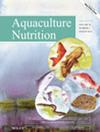生物絮团技术对水产养殖水质的影响:系统荟萃分析
IF 3
2区 农林科学
Q1 FISHERIES
引用次数: 0
摘要
一种称为生物絮团技术(BFT)的技术是一种环境友好的水产养殖方法,其中成功的生长周期取决于对水质参数的维持和监测。研究表明,改善BFT水质并保持其参数的安全范围有助于提高养殖鱼种的生长性能。在对文献进行系统回顾后,进行了荟萃分析,探讨了不同BFT系统对pH、溶解氧(DO)、亚硝酸盐(NO2-N)、硝酸盐(NO3-N)、氨(NH3-N)、总氨氮(TAN)、总悬浮固体(TSS)和碱度等重要水参数的影响。遵循PRISMA筛选过程,有33项研究符合meta分析的条件。meta分析显示,BFT对NO2-N和TSS有显著影响,而pH、DO、NO3-N、NH3-N、TAN和碱度无显著影响。分析表明,NO2-N对BFT有显著的负效应,而TSS对BFT有显著的正效应。本研究还发现了一些发表偏倚,在一些研究的实验中,很少有实验显示出由于BFT在系统中的应用而产生的极端积极和消极的效应大小。总体而言,研究结果表明,在不同的水产养殖系统中,BFT对水质参数的影响是深刻的,这表明了BFT在可持续和环境友好型水产养殖生产中的未来发展。本文章由计算机程序翻译,如有差异,请以英文原文为准。
The Impact of Biofloc Technology on Water Quality in Aquaculture: A Systematic Meta-Analysis
A technique called biofloc technology (BFT) is an environmentally friendly method for aquaculture in which a successful growing cycle depends on the maintenance and monitoring of water quality parameters. Studies have revealed that improving water quality in BFT and maintaining the safety range of the parameters can help to increase the growth performance of cultured species. Following a systematic review of the literature, a meta-analysis was performed to explore how some important water parameters such as pH, dissolved oxygen (DO), nitrite (NO2–N), nitrate (NO3–N), ammonia (NH3–N), total ammonia nitrogen (TAN), total suspended solids (TSS), and alkalinity were influenced by different BFT systems. The PRISMA screening process was followed, and 33 studies were eligible for the meta-analysis. The meta-analyses showed that NO2–N and TSS were significantly affected by BFT, while pH, DO, NO3–N, NH3–N, TAN, and alkalinity were not significantly influenced by this system. The analyses revealed that NO2–N had a significant negative effect size due to BFT, whereas TSS showed a significant positive effect size. The study also revealed some publication bias in which few experiments of some studies showed extremely positive and negative effect sizes due to BFT application in the system. Overall, the findings suggest clear evidence of the profound influence of BFT on the water quality parameters in different aquaculture systems, suggesting the future development of BFT for sustainable and environmentally friendly aquaculture production.
求助全文
通过发布文献求助,成功后即可免费获取论文全文。
去求助
来源期刊

Aquaculture Nutrition
农林科学-渔业
CiteScore
7.20
自引率
8.60%
发文量
131
审稿时长
3 months
期刊介绍:
Aquaculture Nutrition is published on a bimonthly basis, providing a global perspective on the nutrition of all cultivated aquatic animals. Topics range from extensive aquaculture to laboratory studies of nutritional biochemistry and physiology. The Journal specifically seeks to improve our understanding of the nutrition of aquacultured species through the provision of an international forum for the presentation of reviews and original research papers.
Aquaculture Nutrition publishes papers which strive to:
increase basic knowledge of the nutrition of aquacultured species and elevate the standards of published aquaculture nutrition research.
improve understanding of the relationships between nutrition and the environmental impact of aquaculture.
increase understanding of the relationships between nutrition and processing, product quality, and the consumer.
help aquaculturalists improve their management and understanding of the complex discipline of nutrition.
help the aquaculture feed industry by providing a focus for relevant information, techniques, tools and concepts.
 求助内容:
求助内容: 应助结果提醒方式:
应助结果提醒方式:


